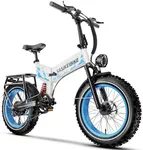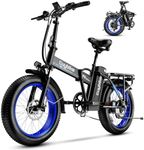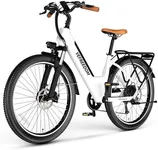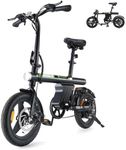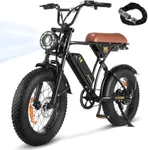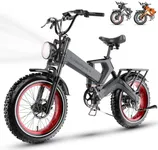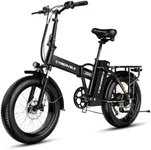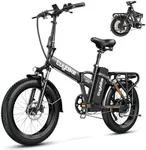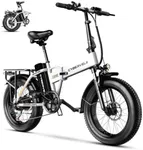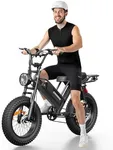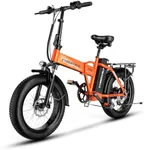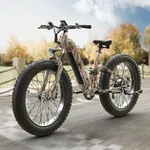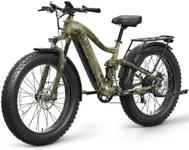Buying Guide for the Best Electric Folding Bikes
Electric folding bikes are a great option for those who need a compact, portable, and efficient mode of transportation. They combine the convenience of a folding bike with the added power of an electric motor, making them ideal for commuting, urban travel, and even leisure rides. When choosing an electric folding bike, it's important to consider several key specifications to ensure you get the best fit for your needs. Here are the main specs to look at and how to navigate them.Motor PowerThe motor power of an electric folding bike is measured in watts (W) and determines how much assistance the motor can provide. This is important because it affects the bike's ability to handle different terrains and speeds. Motor power typically ranges from 250W to 750W. For flat city commuting, a 250W motor is usually sufficient. If you plan to tackle hills or need more speed, consider a motor with 500W or more. Choose based on the terrain you will be riding on and how much assistance you need.
Battery CapacityBattery capacity is measured in watt-hours (Wh) and indicates how much energy the battery can store. This is crucial as it determines the range of the bike, or how far you can travel on a single charge. Battery capacities can range from 200Wh to 700Wh or more. For short commutes or occasional use, a lower capacity battery may suffice. For longer rides or daily commuting, look for a higher capacity battery to ensure you don't run out of power mid-ride. Consider your typical travel distance and choose a battery that can comfortably cover that range.
WeightThe weight of an electric folding bike is an important factor, especially if you need to carry it or store it in tight spaces. Electric folding bikes can weigh anywhere from 30 to 60 pounds or more. Lighter bikes are easier to carry and fold, making them ideal for those who need to transport the bike frequently. Heavier bikes may offer more stability and durability but can be cumbersome to carry. Think about how often you will need to lift or carry the bike and choose a weight that you can manage comfortably.
Folded SizeThe folded size of the bike is a key consideration for storage and portability. This spec tells you how compact the bike becomes when folded, which is important if you have limited storage space or need to take the bike on public transport. Folded sizes can vary significantly, so check the dimensions to ensure it fits in your intended storage space. If you need to store the bike in a small apartment or carry it on a train, look for a model with a smaller folded footprint.
Frame MaterialThe frame material affects the bike's weight, durability, and ride quality. Common materials include aluminum, steel, and carbon fiber. Aluminum frames are lightweight and resistant to rust, making them a popular choice for folding bikes. Steel frames are heavier but offer more durability and a smoother ride. Carbon fiber frames are the lightest and strongest but also the most expensive. Consider how you will use the bike and choose a frame material that balances weight, durability, and cost according to your needs.
Wheel SizeWheel size impacts the bike's handling, comfort, and portability. Electric folding bikes typically have wheel sizes ranging from 16 to 20 inches. Smaller wheels (16 inches) make the bike more compact and easier to fold, but they can be less stable and comfortable on rough terrain. Larger wheels (20 inches) provide a smoother ride and better handling but make the bike slightly bulkier when folded. Choose a wheel size based on your preference for ride comfort versus portability.
Assist Levels and ModesAssist levels and modes refer to the different settings that control how much power the motor provides. This is important for customizing your ride experience and managing battery usage. Most electric folding bikes offer multiple assist levels, from low to high, and may include modes like pedal-assist and throttle. Pedal-assist requires you to pedal while the motor provides assistance, while throttle mode allows you to ride without pedaling. Consider how much control you want over the motor assistance and choose a bike with the appropriate levels and modes for your riding style.
